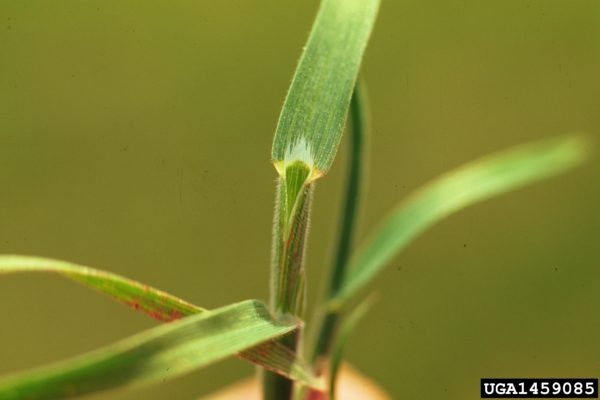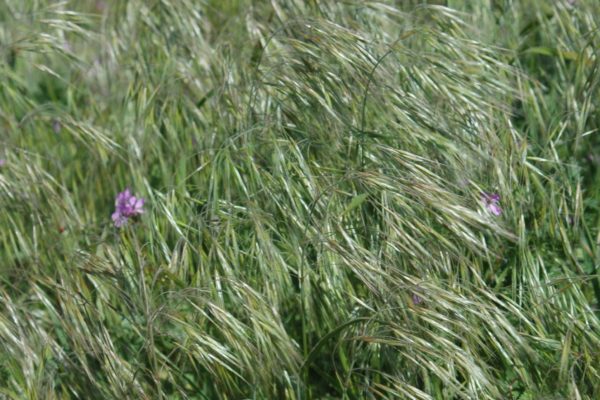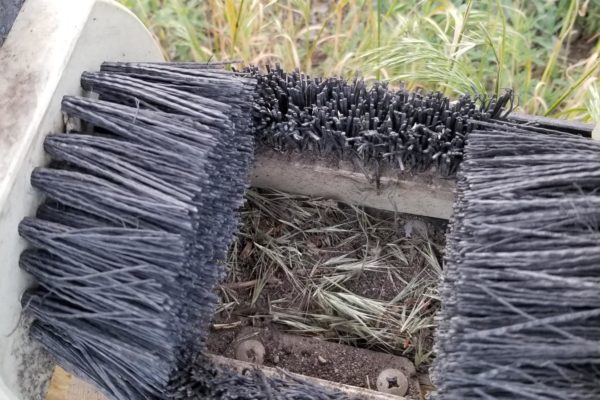Cheatgrass
Warning
Awns may injure livestock and other animals’ eyes and mouths.
About This Species
Cheatgrass (Downy brome, Drooping brome) is an annual grass introduced to North America in the late 1800’s from Europe, Southwest Asian, and Northern Africa. It can be found alongside roads or disturbed areas, or in sagebrush ecosystems where it can form dense stands and outcompete native grasses.
It can dramatically alter wildfire regimes through its early season and annual lifecycle, as well as monoculture growing habit. It builds large, dense fire loads of dead grass at the peak of the North American summer. It can additionally injure livestock and animals’ eyes and mouths by its sharp awns.
How to Identify
Cheatgrass can range from 10-75 cm tall, with slightly hairy green stems and slender, drooping branches.
Cheatgrass panicles can have up to 8 spikelets with very sharp awns. These can change colour from green to purple to brown as the plant matures and eventually dries.
Leaves are light green, and hairy, with a fused sheath and conspicuously hairy lower sheaths.
Take Action
Prevention is the best approach.
- What’s in your Hay? PDF
-
If you need advice about invasive species on your property or you are concerned about reported invasives in your local area, contact your local government or regional invasive species organization.

PlayCleanGo
Learn about best practices
REPORT TO PROTECT BC’S BIODIVERSITY

Use the app
Observe and report to protect BC’s biodiversity

Report through this website
Use our form to tell us what you’re seeing and where.








